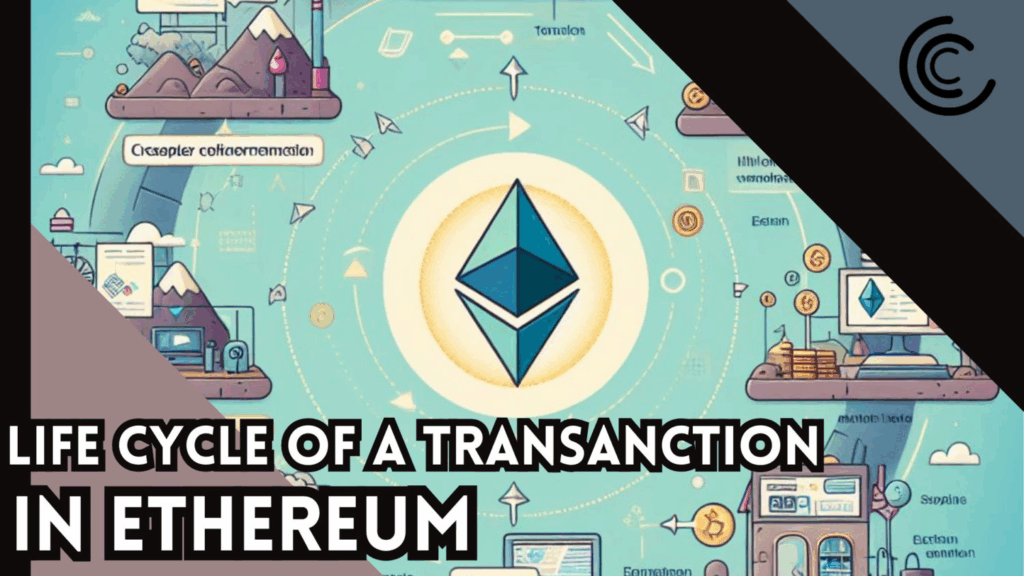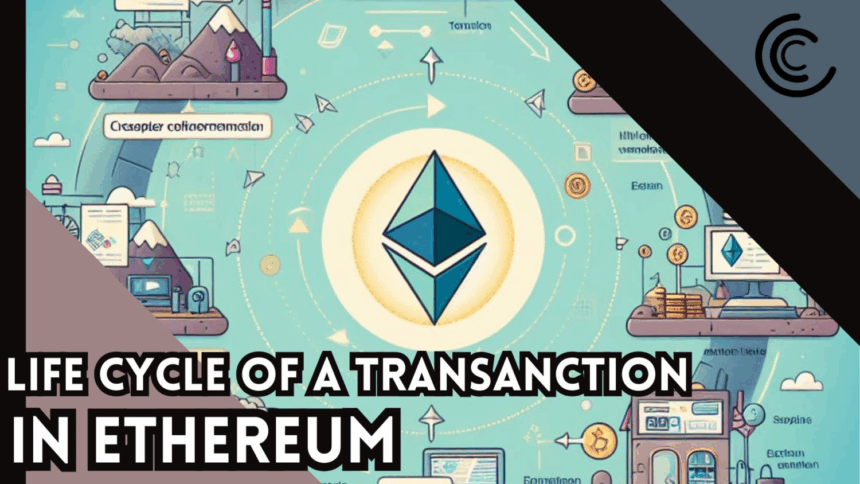In this article, I will discuss the Life Cycle of a Transaction in Ethereum , focusing on the different stages a transaction passes through in the network.
Every stage from creation and broadcasting, to confirmation and achieving finality, aids in maintaining the network’s transparency and security. This article serves all audiences, from novices to seasoned developers, by providing an explanation of the inner workings of Ethereum transactions.
Overview
The Ethereum blockchain is a smart contract platform and a decentralized computer. Ethereum blockchain verifies every single interaction on the network, and each interaction is a transaction.
You may send ETH, mint an NFT, or perform a DeFi exchange – a transaction will always fuel the operation. For users and developers, knowing the ebbs and flows of a transaction on Ethereum is critical.
It helps them understand the barriers, delays the data may face, and the reason behind the gas fee fluctuations. In this article, we will take an Ethereum transaction step-by-step and explain each stage in detail, starting with initiation and ending with finality.
Life Cycle of a Transaction in Ethereum

Transaction Creation
An Ethereum transaction only begins when it is created. It can be composed by either a user, an application, or a contract leverages transaction, which has the following components:
- Sender and Receiver Adress
- Nonce (referred to as a counter, it includes an address which has been previously interacted with and its transaction history)
- Gas limit (maximum units of computations to be permissible)
- Gas price or the unit of computation fee (cannot exceed the limit of what the sender is able and willing to pay)
- Value (tokens or ETH to be equally proportioned and transferred)
- Data (optional input in the event of a contract call)
- Gas (bear computation units expense or an expense threshold)
Broadcasting to the Network
Upon signing, the transaction is sent to Ethereum nodes in the P2P network. This specialized phase focuses on spreading the transaction to multiple nodes, at which point the transaction is added to a transaction pool, commonly known as the mempool. This is a holding space for transactions awaiting to be added to a block.
Due to network delays and differences in how transactions are validated, mempools are nodes are likely to be a bit different. Popular nodes like Geth or Erigon try their best to synchronize their mempools as soon as possible. At this phase, the transaction is considered to be in a state of equilibrium or “in limbo”.
Inclusion in a Block
In Ethereum, the creation of blocks happens through miners in Ethereum 1.0 (proof-of-work) and through validators in Ethereum 2.0 (proof-of-stake). After the Merge in 2022, Ethereum POS is the consensus in use. Validators monitor the mempool and prioritize which transactions to pick based on gas fees, maximizing payoff by picking the highest paying transactions first.
Transactions which are selected get bundled into a single block that is proposed and broadcasted to the Ethereum network. Each block is constrained in its gas capacity (30 million for example), and thus only a limited subset of transactions can be included.
In this starting phase, competition is introduced. Setting a low gas price comes at the risk of sitting in the mempool longer during high demand periods.
Block Confirmation and Propagation
As soon as a validator generates a new block, it is validated and distributed by other nodes within the network. It is incorporated into the canonical blockchain as long as a majority of nodes accept it as valid. The transaction is confirmed and recorded on-chain.
Through Ethereum, single confirmations are not viewed as entirely safe. This is due to the possibility of short-term chain reorganizations (reorgs) which might change the current status of the chain. To address this, most participants look for multiple confirmations, for instance, going as deep as 12 blocks before a transaction is considered definite and unchangeable.
Finality and Immutability
A transaction is irreversible after it reaches a depth of 12 blocks—sometimes even less. Ethereum employs a method known as “finality checkpoints” within its proof of stake system which ensures blocks cannot be changed unless a third of validators are acting dishonestly.
With this type of consensus, the likelihood of transaction reversal is impossible. Your transaction, assuming no malicious actors, will be cemented on Ethereum’s distributed ledger forever.
Visibility on Explorers
Upon inclusion and confirmation, the transaction can be viewed on Ethereum blockchain explorers Etherscan, Blockscout, or Ethplorer. With these services, anyone can verify the following:
- Status (Success or Fail)
- Block number and timestamp
- Gas used and fees paid
- Event logs and contract interactions
- From/To addresses and value sent
Conclusion
Grasping the intricacies of the Ethereum transaction life cycle gives insight into the sophisticated system which underlies any transfer, contract execution, or token interaction. To reiterate, the life cycle includes creation, mempool propagation, validation, block inclusion, execution, and finality.
Each step preserves the decentralization, security, and transparency of the network. Be it a user sending ETH or a developer deploying smart contracts, understanding the life cycle enhances gas fees, timing strategies, and troubleshooting workflows.
Understanding transaction flow will be key for participants interacting with dApps and the Web3 ecosystem as Ethereum adapts and evolves, particularly with Proof of Stake changes.
FAQ
What is a transaction in Ethereum?
A transaction in Ethereum is a signed data package sent from one account to another. It can transfer ETH, interact with smart contracts, or trigger decentralized applications (dApps).
What are the main steps in an Ethereum transaction’s life cycle?
The key steps include transaction creation, signing, broadcast to the network, validation, block inclusion, execution, confirmation, and finality.
What is the mempool in Ethereum?
The mempool (memory pool) is a temporary storage area where pending transactions wait to be picked up by validators for block inclusion.









